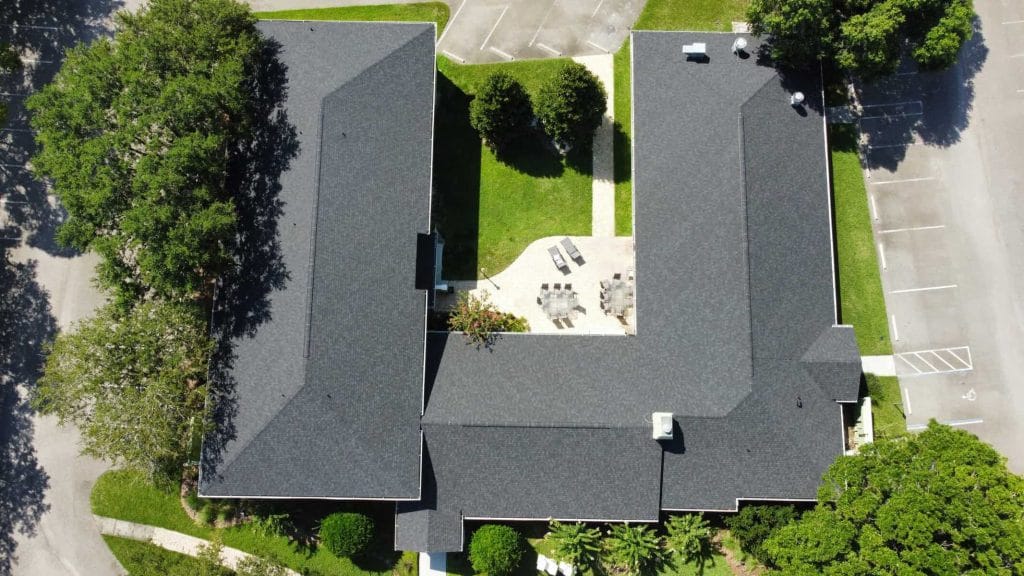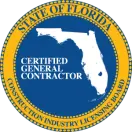Comprehensive Guide to Protecting Your Roof from Wind and Storm Damage
Living in Central Florida, homeowners are no strangers to the severe weather conditions that can strike unexpectedly. Protecting your roof from wind and storm damage is crucial to maintaining the integrity of your home and ensuring the safety of your family. At Gravity Roofing, we understand the unique challenges posed by the Floridian climate and are committed to helping you safeguard your investment with this storm damage roof protection guide.
Wind and storms can cause significant damage to roofs, including shingle displacement, leaks, and structural damage. Understanding how to prevent and address these issues can save you time, money, and stress in the long run. This comprehensive guide will walk you through the essential steps to protect your roof from the elements, emphasizing preventive measures, professional services, and insurance considerations.
How to Recognize and Address Wind and Storm Damage
Types of Damage Caused by Wind and Storms
Wind and storms can lead to various types of roof damage. High winds can lift and remove shingles, expose the underlying roof structure, and cause gutters to detach. Hail can create dents and cracks in shingles, while heavy rain can lead to leaks and water damage. Additionally, flying debris and falling branches can puncture the roof, leading to severe structural issues. Incorporating storm damage roof protection strategies can help mitigate these risks.
Common Signs of Damage
Identifying damage early can prevent minor issues from becoming major problems. Look for missing or damaged shingles, dents from hail, loose or detached gutters, and signs of water leakage inside your home. Discoloration on your ceiling or walls often indicates water damage, which should be addressed immediately.
Essential Preventive Measures for Your Roof
Regular Roof Inspections for Your Peace of Mind
Importance and Frequency
Regular inspections are crucial for maintaining the integrity of your roof. Schedule professional roof inspections at least twice a year, ideally before and after storm season. An experienced roofer can identify and address potential problems such as loose shingles, damaged flashing, or clogged gutters that could exacerbate storm damage. This is a key component of storm damage roof protection.
What to Look for During Inspections
During an inspection, check for loose or missing shingles, damaged flashing, and any signs of wear and tear. Pay close attention to areas around chimneys, vents, and skylights, as these are common spots for leaks. Effective storm damage roof protection starts with thorough inspections.
Roof Maintenance Tips to Keep You Safe
Securing Loose Shingles
Loose shingles are more susceptible to being blown away by high winds. Ensure all shingles are securely fastened, and replace any that are damaged. Gravity Roofing offers professional shingle inspection and replacement services to ensure your roof remains intact, providing essential storm damage roof protection.
Repairing Minor Issues Promptly
Address minor issues such as small leaks or damaged shingles immediately to prevent them from escalating. Timely maintenance can save you from costly repairs in the future and enhance storm damage roof protection.
Choosing the Best Wind-Resistant Roofing Materials for Your Home
Types of Wind-Resistant Materials
Consider installing wind-resistant shingles, which are designed to withstand higher wind speeds. Metal roofing is another excellent option due to its durability and resistance to severe weather. These materials are crucial for storm damage roof protection.
Benefits and Installation Tips
Wind-resistant materials can significantly reduce the risk of damage during storms. Ensure these materials are installed by professional roofers like Gravity Roofing to guarantee optimal performance and storm damage roof protection.
Maintaining Your Trees and Shrubs to Protect Your Roof
Pruning Overhanging Branches
Trees near your home can pose a significant risk to your roof during a storm. Overhanging branches can break off and fall onto your roof, causing considerable damage. Regularly trim any branches that hang over your roof or are close enough to fall onto it during high winds. This precautionary measure can prevent damage from falling debris and reduce the risk of branches scraping and damaging your shingles, contributing to storm damage roof protection.
Keeping Trees and Shrubs Trimmed
Well-maintained trees and shrubs are less likely to cause damage. Keep them trimmed and healthy to reduce the likelihood of branches breaking off during severe weather, a vital step in storm damage roof protection.
Gutter Cleaning and Maintenance for a Healthy Roof
Importance of Clean Gutters
Clean gutters are essential for directing water away from your roof and home. Clogged gutters can cause water to back up and seep under your roof’s edge, leading to leaks and water damage. Proper gutter maintenance is integral to storm damage roof protection.
How to Maintain Gutters
Regularly clean your gutters to remove debris such as leaves and twigs. Consider installing gutter guards to prevent clogs and ensure proper water flow, enhancing your storm damage roof protection strategy.
How to Secure Loose Outdoor Items Before a Storm
List of Items to Secure
Secure outdoor furniture, grills, and any other loose items that could become projectiles during high winds. This is an important aspect of storm damage roof protection.
Methods to Secure Them
Store loose items in a shed or garage before a storm. Use bungee cords or straps to secure larger items that cannot be moved indoors, furthering your storm damage roof protection efforts.
Benefits of Installing Storm Shutters for Your Home
Benefits of Storm Shutters
Storm shutters provide an additional layer of protection for your windows and roof during storms. They can prevent debris from breaking windows and causing further damage. Storm shutters are a key element of storm damage roof protection.
Types and Installation Tips
There are various types of storm shutters, including roll-down, accordion, and panel shutters. Choose the type that best suits your needs and ensure they are installed correctly for maximum storm damage roof protection.
Ensuring Your Roof is Properly Installed
Ensuring Correct Installation
A properly installed roof is more likely to withstand severe weather. Ensure your roof is installed according to manufacturer specifications and local building codes. Proper installation is crucial for storm damage roof protection.
Professional vs. DIY Installation
While DIY installation can save money, it may not provide the same level of protection as a professionally installed roof. Trust Gravity Roofing’s experts for a secure and durable roof installation, enhancing your storm damage roof protection.
Professional Roofing Services You Can Rely On
When to Call a Professional for Your Roof
If you notice significant damage, leaks, or structural issues, it’s time to call a professional. Regular inspections by Gravity Roofing can catch problems early and keep your roof in top condition, providing essential storm damage roof protection. If you’re looking for additional resources on storm damage protection, the Insurance Institute for Business & Home Safety (IBHS) offers comprehensive guidelines and research on how to safeguard your property from severe weather.
Choosing the Right Roofing Contractor for Your Needs
Select a reputable roofing contractor with experience in your local area. Gravity Roofing, based in Central Florida, understands the specific challenges of the region’s climate and offers tailored solutions to protect your roof and provide storm damage roof protection.
By including this link, you provide your readers with additional trustworthy information while enhancing your own article’s credibility and SEO performance.
Insurance Considerations for Roof Damage
Understanding Your Policy for Better Protection
Review your homeowner’s insurance policy to understand what types of roof damage are covered. Some policies may cover wind and hail damage but exclude others. Knowing your policy details is important for storm damage roof protection.
Documenting and Claiming Damage Effectively
Document any damage with photos and detailed descriptions. Contact your insurance company promptly to file a claim and ensure you follow their procedures for assessment and repairs, a critical step in storm damage roof protection.
Conclusion
Protecting your roof from wind and storm damage requires regular maintenance and proactive measures. By conducting routine inspections, maintaining clean gutters, trimming overhanging branches, securing loose shingles, and installing storm-resistant features, you can significantly reduce the risk of storm damage to your roof. Taking these steps will help ensure your roof remains sturdy and reliable, even during the harshest weather conditions.
For professional roof inspections and maintenance services, contact us today. Our experienced team at Gravity Roofing is here to help you protect your home and keep your roof in top condition. Stay proactive and ensure your roof remains a sturdy shield against the elements, providing optimal storm damage roof protection.














